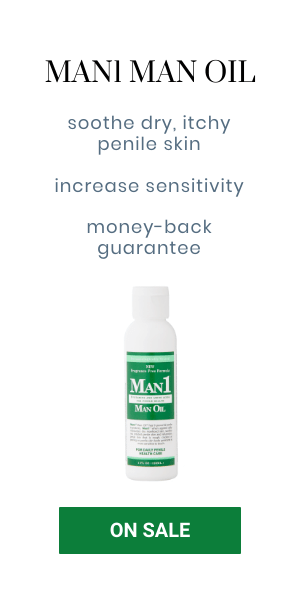There has been a debate raging over the past few decades about the common practice of circumcision for infant boys. Those who promote the practice believe it leads to better hygiene later in life. But those who are against it point out that the loss of foreskin can mean significant loss of sensation. Even the best penis care might not be enough to allow a circumcised man to feel the intense sensations that uncircumcised men do.
But besides the desire to improve penis sensitivity, many see foreskin restoration as a good way to right the ‘wrong’ done to those who are circumcised long before they are old enough to make the decision for themselves. There are several ways to go about foreskin restoration; we’ll talk about some of the most popular, as well as what a man can expect from penis sensitivity if he chooses to go this route.
Foreskin restoration options
Ultimately, there are two options for restoration: Surgical and non-surgical. The surgical route involves grafting tissues from other parts of the body, such as the scrotum, onto the penis to elongate the skin that is already there behind the glans. The result is a penis that looks and acts as though it is uncircumcised, but the jury is still out on whether it really improves penis sensation. That’s why many doctors recommend the non-surgical options.
Non-surgical options usually include some sort of traction device or weighted device that pulls the skin down over the glans. It works very slowly. During the time a man is using it, the body generates new cells that allow the skin to be pulled farther down over the glans. Eventually, a man might have enough skin to cover the glans and make it appear that he still has his natural foreskin. The level of patience and dedication must be very strong for a man to make this a viable option.
What does it all mean for penis sensitivity?
For most men, the heightened penis sensitivity that comes from having a foreskin stems from the fact that the foreskin covers the glans, thus protecting it from the harsh environment around it. A man with an uncircumcised penis has that gentle layer of protection between the most sensitive part of his penis and the underwear, trousers, and any other material that might come into contact with it. The result is an area much more sensitive to touch.
How does a foreskin restoration help? Over time, the skin that covers the glans allows it to lose some of the ‘toughness’ it developed over the years of being touched by underwear and other materials. This, in turn, allows the penis sensation to come back, making a man much more sensitive. Other options to make this happen do exist in the form of an artificial foreskin, which is simply the use of a very soft, pliable cover that attaches to the head of the penis with gentle pressure (such as a Velcro closure), which keeps the glans encased in a warm, slightly moist environment that mimics what a real foreskin would do.
When a man is considering foreskin restoration, he should always do thorough research and consult with his doctor about ways to regain penis sensitivity. He should also make good use of a daily penis health crème (health professionals recommend Man 1 Man Oil, which is clinically proven mild and safe for skin). A crème that contains Shea butter and vitamin E can go a long way toward keeping skin smooth and supple, ready for the lightest touch. A crème that contains L-carnitine can also be helpful in preventing peripheral nerve damage that can result from excessive handling, exposure to environmental issues and much more.
